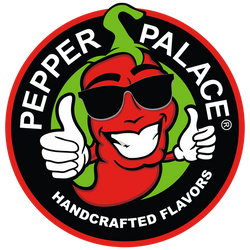Find a Store
11 Facts About Salsa That Will Impress Your Friends
When you want to impress your friends, one thing you can do is tell them all about salsa—the condiment, not the dance (although that might impress them as well). Check out these 11 facts about salsa and prepare to be the most impressive person at the fiesta.
The Word “Salsa” Means “Sauce” In Spanish
Salsa has been around since the Aztecs, who used it as a condiment for just about everything. But it didn’t have an official name until 1571, when Alonso de Molina, a Spanish priest and missionary, dubbed it “salsa”, which literally just means “sauce” in English. So if you take a trip down south and ask for some Salsa with your taco, you’re actually just asking for “sauce.” But don’t worry, they’ll know what you mean—with a sauce this delicious, no other name is necessary.
“Pico De Gallo” Literally Translates To “Rooster’s Beak Salsa”
Here’s a funky translation: “Pico De Gallo”, the chunky fresh salsa that we all know and love, literally means “rooster’s beak salsa.” Don’t worry—no rooster beaks are used in the making of this fully vegetarian dish. We suspect it got this name because the chiles used to make this salsa are shaped like rooster beaks.
Salsa = America’s #1 Condiment
In 1991, Salsa had the highest sales out of any condiment in the country—even ketchup! It’s happened many times since then—a true testament to the country’s love of this scrumptious condiment.
The Salsa Dance Was Named After the Dip
Whether you’re eating salsa or dancing it, it’s sure to be hot and spicy. The salsa music and associated dance that we’re all familiar with today originated in the 1960s as an amalgamation of various different styles that were combined to create a spicy and vibrant product—just like our beloved dip.
Salsa Is A Vegetable
The USDA officially designated salsa as a vegetable in the food pyramid back in 1998, and it's still true today. Getting your daily servings of veggies just got way more delicious!
Salsa Lasts Longer Than You Think
You might not know this but if you have a jar of store-bought salsa that you haven’t opened yet, it may last up to 18 months in your pantry. Of course, you should always check the expiration date before diving in.
There’s A National Salsa Month
There’s no better time to celebrate our favorite condiment than in May—National Salsa Month!
Salsa And Chips Are (Kinda) A Big Deal In Texas
They became the official snack for Texas in 2003. Students from Marcell Elementary School contacted their state representative with the idea of giving this beloved combo an official place in the state’s repertoire, and he happily obliged.
We Still Make Salsa Like The Aztecs
We mix chiles and tomatoes together just like the Aztecs did. While they kept it simple, we prefer to spice it up by adding more ingredients to the mixture, like garlic, cilantro, and lime, to name a few. But even with our fancy fixin’s, we still stick to the same classic base—talk about a time-tested recipe.
There Are Actually Six Different Types Of Salsa:
- Salsa roja (red salsa, the classic recipe)
- Pico de gallo (chunky salsa featuring fresh tomatoes, onions, and chiles)
- Salsa taquera (taco sauce, a smoother, spicier recipe)
- Salsa verde (green salsa made with tomatillos instead of tomatoes)
- Salsa de aguacate (salsa that’s green and creamy thanks to avocado and tomatillos)
- Salsa criolla (salsa with red onions)
- Fruit salsa (sweet salsa featuring mango, pineapple, or any other fruit)
Salsa Boosts Your Immune System & Metabolism
Salsa is a serious superfood. It’s made from vegetables, like tomatoes, peppers, and onions, with naturally-occurring vitamins and antioxidants that can help improve your immune system. And if your salsa contains hot peppers, they lend a hefty dose of capsaicin which can boost your metabolism, providing weight-loss benefits.
If you’d like to explore some salsa now, you’re right where you need to be. With salsas ranging from medium to hotter-than-you-ever-thought-possible, Pepper Palace has the sauce you’re looking for.
